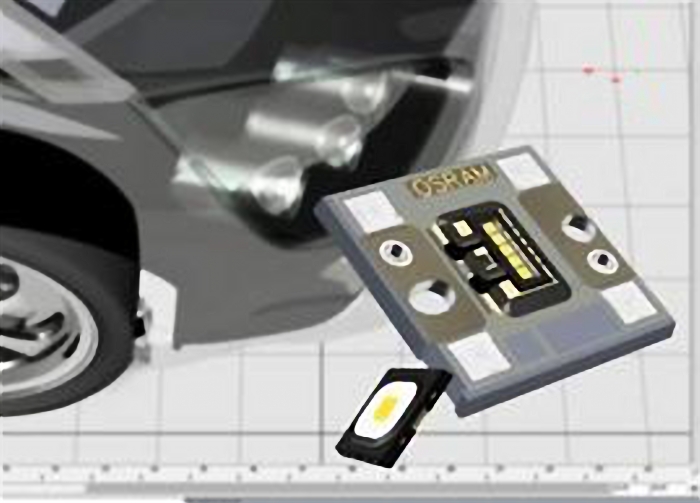Osram LED prototypes add dynamism to LED lighting for headlights
13-06-2014
Osram Opto Semiconductors will be releasing two latest LED headlights in the shape of the OSLON Black Flat and the Osram OSTAR Headlamp Pro. Both combine new chip and package technologies besides being equipped with a ceramic converter. They feature in high light output even at high currents, a uniform light pattern, thermal stability and a particularly good contrast ratio.
More and more flexibility is needed for the LED lights used in headlights, the "eyes" of any vehicle. Not only do they have to be reliable and provide the appropriate amount of light in all visibility and driving conditions, they have to perform various functions in changing conditions, including the high temperatures in the headlight itself. To meet all these requirements, Osram has developed the new LED lights ofOSLON Black Flat and Osram OSTAR Headlamp Pro.
OSLON Black Flat is the latest supplement to the OSLON Black Series in addtion to being equipped with a ceramic converter and a QFN package (Quad Flat No Leads). With a typical thermal resistance of 5 K/W, it is 20% better than the other member of the Black Series. The black package stands for high stability because the thermal coefficient of expansion of the special material matches the coefficient of expansion of the metal core board. The new LED light does not need lens, so its light can be shot very close to the light guide for example. The solder pad is same as the ones used in the entire range, so the light output can be greatly increased from a largely identical board design. With a power draw of 2.3 W and an operating current of 700 mA, the new product achieves a typical luminous flux of 190 lm.
The Osram OSTAR Headlamp Pro is able to meet varied requirements for output and adaptability to environments. It provides a more uniform light pattern, better thermal stability and greater brightness than its forerunner. The 20 x 20 mm high-power LED light is installed with two to five chips.
Headlight manufacturers have much lower costs with the new OSTAR solutions. There is more output for less money. AFS functionality (Adaptive Frontlighting System) can be achieved with chips that can be controlled individually or in series. This leads to configurations that allow matrix chip solutions. Typical luminous flux values are around 250 lm for the single chip (1 A operating current) – and therefore 1250 lm for the 5-chip version. The thermal resistance of the 5-chip version is 2.1 K and is therefore 0.5 K less than for the old model.
Peter Knittl, Director of Automotive LED light department said "The two types of LED lights combine new technologies with new functionality ,which are perfectly up to the requirements of headlight systems. This makes them much attractive for widespread applications in all vehicles." All the products are based on UX:3 chip technology and produce high light output at high currents. Their ceramic converter works for a uniform light pattern. Packages of the chips directly in the reflector produces a defined light/dark boundary in the light pattern and a particularly good contrast ratio with the help of advanced package technology. All these properties make the LED lights ideal for efficient use in headlights.


